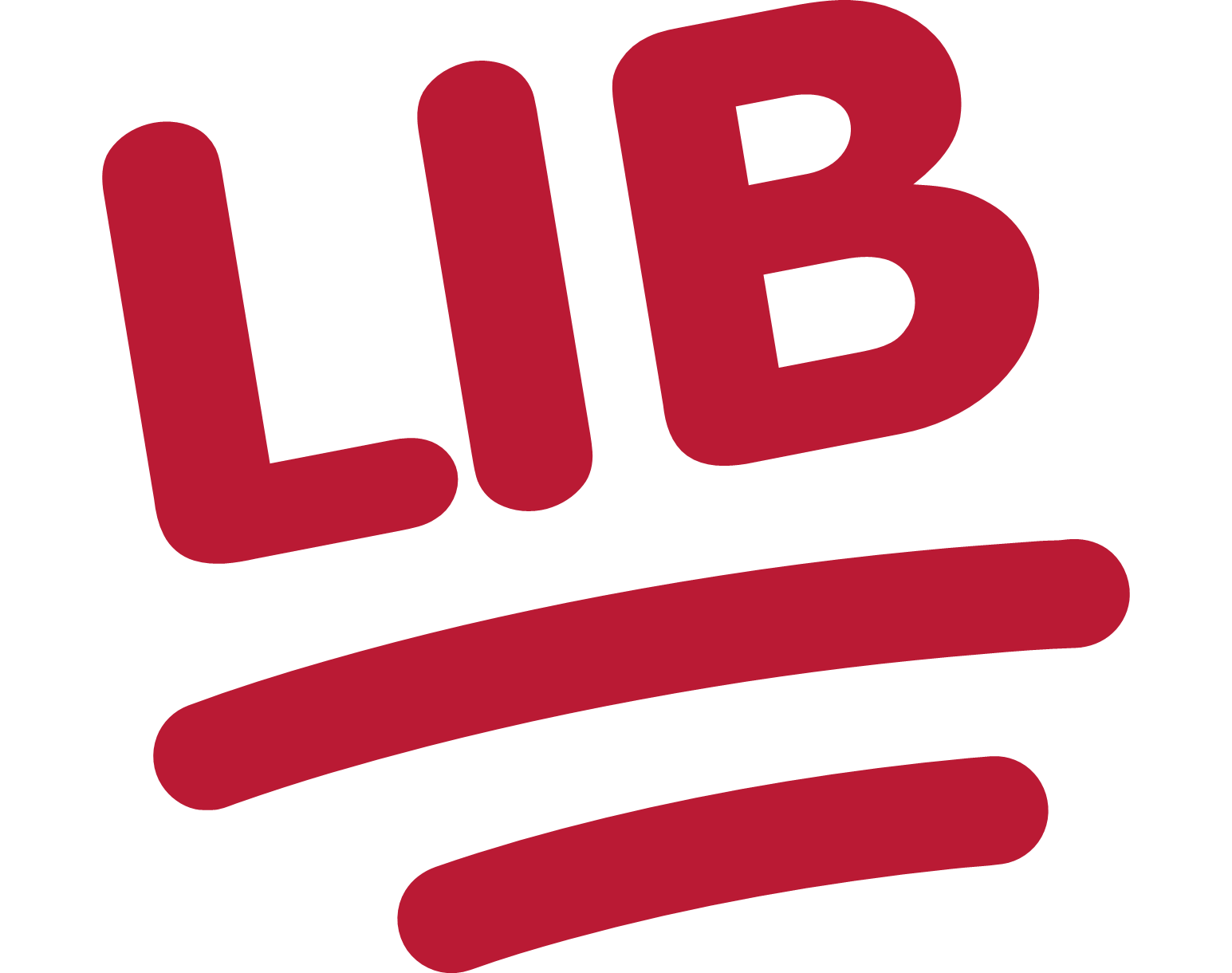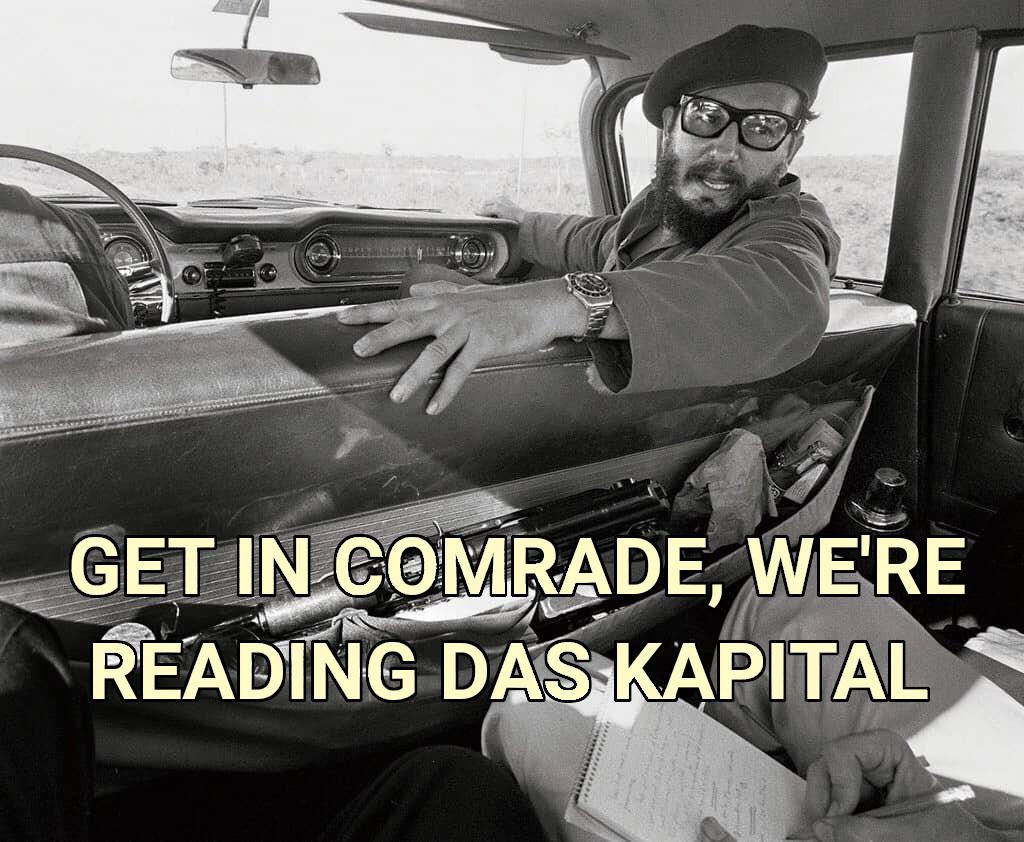Aight I'm due a re-read. Sign me up.
theory
A community for in-depth discussion of books, posts that are better suited for [email protected] will be removed.
The hexbear rules against sectarian posts or comments will be strictly enforced here.
I should do this
Upside: +2 intelligence, +2 wisdom
Downside: -2 charisma (you will constantly have to urge to explain materialist theory to people complaining about the world's problems)
Please add me to the at! I kept reading the first two chapters over and over every two months last year.
I have notes for each chapter when I went through volume 1 a few years ago. Now I have an excuse to do the other two volumes.
anywhere where the entire book is posted free online?
https://marx.capital currently links to that page as well. It's handy!
best use of a custom tld I've ever seen
Here's a YouTube playlist of the audiobook. I might be biased but I find this guy's voice very clear and easy to understand: https://www.youtube.com/watch?v=GmgycyY5saM&list=PLUjbFtkcDBlSHVigHHx_wjaeWmDN2W-h8
📖🐿️
Ok fine, I'll quit being a lib and read some large adult theory

We love our big adult son, don't we folks
I have finished sections 1 and 2 just now. I have already a lot to chew on, and questions that I would ask if I weren't pretty sure that they all get answered later on (or even in what I already read, if I just comprehended it better). I looked at David Harvey's guide beforehand and it would certainly seem like I'm not alone in this.
Actually, you know what, having questions but not asking them for fear of embarrassing oneself is for  s:
s:
What is price? It would have to be some combination of use value and exchange value, right?
Edit: Ope, I'm supposed to discuss under the parent comment, sorry!
I like how Radhika Desai describes it: value is like gravity. The “value” of a commodity is an object (or really, the gravity of that object) and price moves around that object like comets and planets move around the sun, if that makes sense.
Value is what determines price all things being equal, but in reality all things are not equal. There are an uncountable number of factors that move the price off the value.
Similar excerpt from Value, Price, and Profit (basically a cliff notes version of Capital):
Excerpt - supply and demand do not explain value
“Supply and demand regulate nothing but the temporary fluctuations of market prices. They will explain to you why the market price of a commodity rises above or sinks below its value, but they can never account for the value itself. Suppose supply and demand to equilibrate, or, as the economists call it, to cover each other. Why, the very moment these opposite forces become equal they paralyze each other, and cease to work in the one or other direction. At the moment when supply and demand equilibrate each other, and therefore cease to act, the market price of a commodity coincides with its real value, with the standard price round which its market prices oscillate. In inquiring into the nature of that VALUE, we have therefore nothing at all to do with the temporary effects on market prices of supply and demand.”
Now, this concept of an ideal price was not innovated by Marx. Adam Smith (regarded by Marx as one of the two great political economists, along with David Ricardo, in Capital chapter 1 footnote 33) thought of this as well and called it natural price.
In fact, Marx was not even the first to come up with a labor theory of value. Adam Smith, a man held in esteem today by modern bourgeois economists, actually himself based his theory on a labor theory of value.
Capital is Marx’s original ideas posed as a critique of political economy (hence the subtitle). So he took these ideas that had already been put forward by Smith, Ricardo, and others, and carried them out systematically to their conclusion, in some aspects more consistently than the original authors.
A flaw in Adam Smith’s theory of labor is the mud pie argument so often thrown at Marx, when really Marx made the theoretical advancement that overcomes it. Smith did not determine what kind of labor creates value and hence counts as social labor. So, someone who makes something socially useless, like mud pies, all day could earn an income in Smith’s model.
What distinguishes Marx’s labor theory from earlier theories is in his recognition of the dual character of labor^1^, that a singular act of labor is regarded in two different ways in the real practice of capitalism. On one hand, concrete labor produces use values, but on the other hand, abstract labor produces value. Throughout capital, concrete ≈ natural/physical, and abstract ≈ social. All societies produce use values, but only in the capitalist epoch does society behave as though these use values have a distinct property called value, due to being commodities.
1 - Letter from Marx to Engels
”The best points in my book are: 1) the two-fold character of labor, according to whether it is expressed in use value or exchange value. (All understanding of the facts depends upon this.) It is emphasized immediately, in the first chapter; 2) the treatment of surplus value independently of its particular forms as profit, interest, ground rent, etc.”
The elementary expression of the relative value of a single commodity, such as linen, in terms of the commodity, such as gold, that plays the part of money, is the price form of that commodity.
In other words, price is the expression of a commodity's value through its relation to the money commodity. Alternatively, its "exchange value in terms of money".
In a market of N total commodities, each commodity has (N-1) relative expressions to other commodities which are all valid expressions of its value; but exactly one of these expressions has money as the equivalent. This one special expression is price. Notice that there is nothing essentially different about price compared to all the other relative expressions. What makes price stand out is that, in practice, the money commodity is used as the universal equivalent.
I would note this question as it will be considered more in detail in later chapters, I think chapter 3.
Is the value of money also treated later? Seems like money has an exhange value that in some manner should equate to the labor expended to produce it. But this labor quantity appears relatively low, and does not vary much between $1 and $100 notes. Does this constitute an exception (e.g. the value of the banknote is representative), or is the labor involved in making money somehow more complex than just the physical process of manufacture?
It will be discussed especially in chapter 3, which is notoriously one of the most difficult chapters of vol 1. The first three chapters lay the foundation, then the rest is the consequences.
For now I will just say that money as you mention it having minimal labor cost is just a token for an underlying money commodity. How this exactly works today with respect to fiat currency is beyond the scope of volume 1 but is an active area of discussion in Marxist scholarship.
Edit: on second thought I don’t remember if Marx directly talks about token money as such in chapter 3. But he does talk about it in his 1859 critique of political economy which was the precursor for Capital.
Try to understand the money commodity first, and then all the various functions of money (money of account, money as a measure of value, etc.) all explained in chapter 3.
That's what tracks according to what was already laid out in these first two sections, and according to what I've heard from others, but it still confuses me to think that the actual quality of something does not affect its price.
I mean, surely if two of the exact same thing were made in the exact same timespan, but the one was made in a sweatshop while the other was made in a factory with good conditions and pay, then the latter would be more expensive, right?...
...
...Oh, the latter would just be overpriced, wouldn't it?
Correct. There is a single market price, and competition forces all producers to a minimum of labor expenditure.
If the quality of something is inseparable from what it is, say a gold bar with 99.99999% purity compared to a gold bar that is 98% pure, then you can consider them as two separate commodities because the labor process is distinct for each, and they will have different prices reflecting that.
The method in this chapter is one of observation, observing the real behavior of capitalist society. It is a fact that there are “going rates” for things, quantitative relations between all the commodities (mainly with money, ie prices).
This is basically the Hegelian immanent critique. That is outside the scope of this book, but I thought I would mention it. The commodity is being considered strictly by its own internal logic, without imparting what we already “know” about it. As much as possible, we are observing as it exists in itself and as it relates to other things.
Week 1, Jan 1-7, Volume 1, Chapter 1 'The Commodity'
@[email protected] @[email protected] @[email protected] @[email protected] @[email protected] @[email protected] @[email protected] @[email protected] @[email protected] @[email protected] @[email protected] @[email protected] @[email protected] @[email protected] @[email protected] @[email protected] @[email protected] @[email protected] @[email protected] @[email protected] @[email protected] @[email protected] @[email protected] @[email protected] @[email protected] @[email protected] @[email protected]
Count me in! I need an excuse to get back into reading lol
I'm in too
Pro tip, don't skip the footnotes
When the footnotes cease being footnotes and the body text becomes a header

The podcast Reading Capital with Comrades from Liberation School is also a great resource for going along with vol 1.
What is the relationship between labor and labor-power?
Labor Power is basically Horse Power. Like when you buy a car, you don't buy it for its current speed, you buy it for its ability to do work (e.g. start up and drive). Labor is the realization of labor power.
This will repeat yearly until Communism is achieved
Im gonna be reciting this shit from memory when the revolution finally comes to the imperial core lmfao
